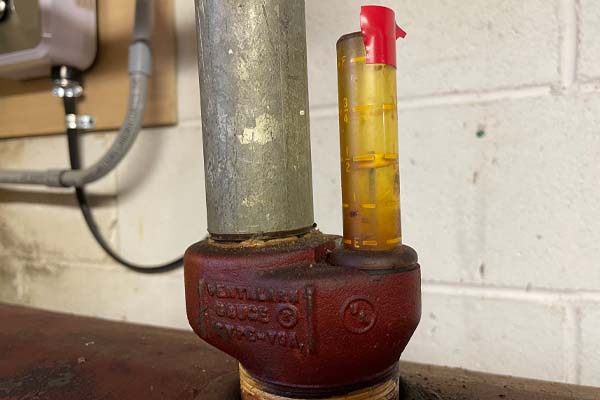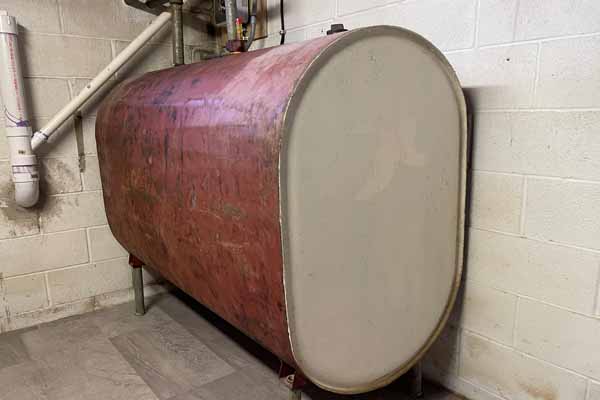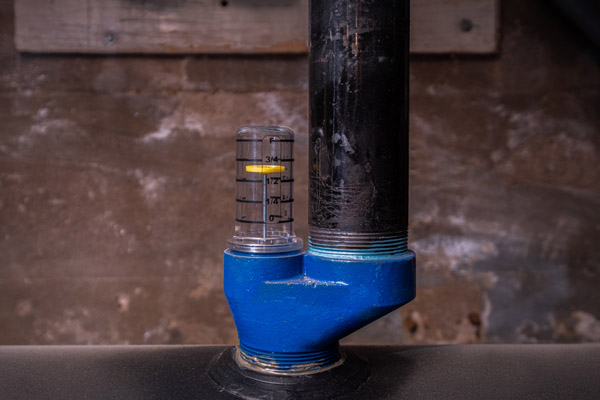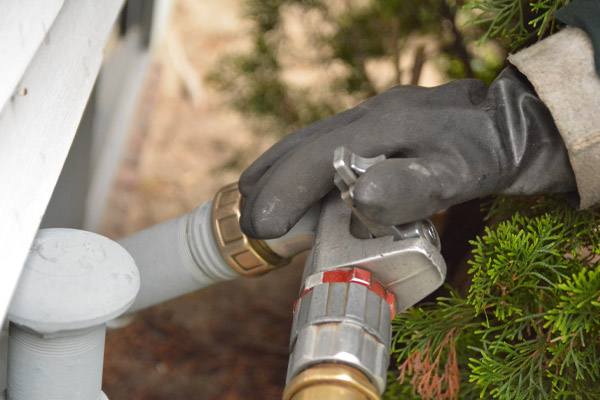How to Read Your Heating Oil Tank Gauge

Homes with heating oil systems are well-prepared to face the harsh winter conditions. With their dedicated fuel tanks, they do not rely on external fuel supply. This offers protection against potential interruptions seen with natural gas-dependent homes. However, homeowners must make sure that their tank capacity aligns with their heating requirements. Establishing a routine of monitoring the heating oil levels in their tanks through the heating oil tank gauge is essential. This practice facilitates the timely scheduling of heating oil deliveries to maintain uninterrupted warmth during the colder months.
The Basics of Float Gauges in an Oil Tank
Contents

The design of oil tanks has remained relatively unchanged over the past century. It has remained simple yet effective. Typically, an oil tank comprises the following components:
- Main Body: The primary tank structure is primarily a welded steel container with smoothly rounded edges.
- Fill Pipe: This pipe allows adding more oil to the tank.
- Vent Pipe: A vent pipe releases excess air from the tank.
- Whistle (Vent Alarm): Positioned below the vent pipe, the whistle emits a sound as air escapes from the tank.
- Oil Feed Lines: These lines facilitate the movement of oil from the tank to the burner.
- Float Gauge: The float gauge’s end floats atop the oil while a hinged arm extends beneath the surface of the oil. As the oil level decreases, the arm lowers, moving the gauge indicator disc.
Related Article: The Best Ways To Prevent Running Out Of Heating Fuel This Winter
Finding the Oil Tank on the Property
If you have recently purchased a home, it is important to locate the oil tank on your property to access the oil tank gauge. The tank’s placement can vary. It can be easily visible above ground, concealed in a basement, or even situated underground. The external pipes and float gauge should be readily accessible. Oil tanks are typically sizable containers with a standard capacity of 275 gallons or more for heating oil. For safety reasons, these tanks are not filled to capacity. Instead, they usually hold around 225 to 250 gallons of oil, with the remaining space reserved for air. This design allows heating oil to expand without any issues.
Related Article: Oil Tank Condensation: What You Need To Know
Reading the Heating Oil Tank Gauge
Now that you have located the oil tank direct your attention to the gauge positioned at its upper section. You will see a transparent cylindrical device with an indicator disc inside. The standard markings on the gauge include F for full, ¾, ½, ¼, and E for empty. To determine your heating oil tank levels, observe the position of the indicator disc.
If you encounter this for the first time, you might wonder whether to focus on the top or bottom of the disc. In reality, it doesn’t make a difference because the gauge is not a highly precise instrument. Just check where the middle of the disc aligns with respect to the markings.
Related Article: Can I Put Diesel Fuel in My Home Heating Oil Tank?
Calculating the Remaining Fuel In Your Heating Oil Tank
Once you have estimated the fuel level inside the tank, the next step is to calculate the remaining number of gallons. This can be done manually using a straightforward formula. Begin by identifying the tank’s size to determine its fuel capacity. For instance, many homes have a 275-gallon tank. Since these tanks are not filled to capacity and normally hold about 240 gallons of heating oil, you can calculate the remaining fuel using a simple formula. If the float gauge indicates ¼ full, there are approximately 60 gallons remaining (240 gallons multiplied by 0.25)
While this amount can last several weeks, it is better to arrange a refill immediately rather than waiting for the tank to deplete completely. A general guideline is to schedule a heating oil delivery when your tank is approximately 30% full.
Related Article: How To Choose The Best Home Heating Oil Delivery Company
Checking for Oil Tank Gauge Failure

The float gauge offers only an approximate reading of the current fuel level and, at times, can fail to provide an accurate estimation due to issues with the float mechanism. To check this, you can remove the outer casing and manually depress the float downwards. Upon release, the float should naturally rise back up on its own. If it fails to do so, this indicates a malfunctioning float that requires professional attention. Such problems can arise due to wear and tear in older tanks, or the arm under the float can become misaligned and get stuck against the tank’s side. Floats can also be encrusted with thick sludge, rendering them too heavy to function properly.
Overcoming a Broken Heating Oil Tank Gauge
If your tank’s gauge is malfunctioning or if it never had a float gauge, there are alternative methods for determining the fuel level. Manual measurement involves using a long, slender stick that can fit into the tank’s opening. The stick’s length should match the height of the tank. After a refill, insert the stick to gauge the fuel’s position when the tank is at total capacity and mark it accordingly. Later, use the same stick to measure how far the fuel level has decreased.
Related Article: How Much Heating Oil Will I Use A Day?
Typical Heating Oil Tank Duration

A full heating oil tank provides an extended period of heating, with the exact duration influenced by various factors such as:
- Tank size
- Interior Temperature Settings
- Home Size
- Regional Weather Conditions
- Level of Insulation
- Frequency of Use
- Efficiency of the Heating System
- Other Individual Variables
Homes vary in heating practices, with some using heating oil to warm specific areas and others heating the entire residence. Monitoring annual fuel consumption can offer valuable insights into the yearly heating oil needs of a household.
Conclusion
Winters in Connecticut can be quite severe. To avoid the risk of your home running low on heating oil during the colder months, it is important to regularly monitor the heating oil tank gauge and take action if the fuel level drops below ⅓ of the tank’s capacity. Ordering a refill ahead of time ensures that your home remains consistently heated, providing a warm and comfortable environment throughout the season.
Related Article: The Drawbacks Of Purchasing Low-Quality Fuel Oil For Your Home
Call Miller Oil Company For All Of Your Home Comfort Requirements

Miller Oil Company provides the best cooling and heating services in the greater Enfield, CT area. We employ top HVAC technicians who are certified and offer superior HVAC installations, repairs, tune-ups, and replacements. Every one of our knowledgeable technicians has the experience to correctly service your HVAC.
By working with Miller Oil Company, you will receive the best service costs for cooling and heating in the region. With our repair and maintenance services, you will find that your comfort and energy efficiency are improved, and your home cooling and heating costs are reduced. If you require a replacement HVAC unit, we can suggest the most appropriate model for your house that is within your budget. We include a satisfaction guarantee for all of our work. Click the link to view our service area.
We also offer superior heating oil deliveries. You can choose from one of our oil delivery plans or financing options. This way, you can customize your oil deliveries to meet your needs. We use high-quality oil, and all of our deliveries are fast and reliable. Give Miller Oil Company a call today to learn more.
Click here to contact us today or give us a call at (860) 745-0326 if you have any questions.